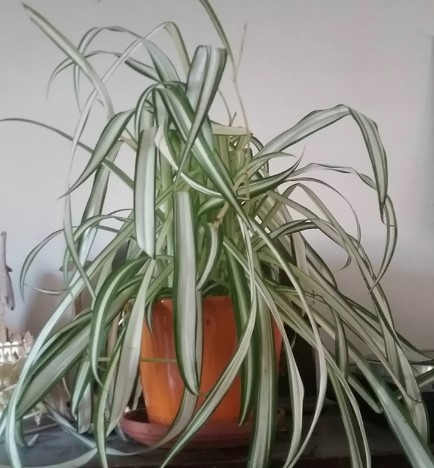Spider plants, scientifically known as Chlorophytum comosum, are popular houseplants for their striking appearance and air-purifying qualities. These hardy plants are relatively easy to care for, making them a favorite choice for beginner and experienced gardeners. However, spider plants can experience transplant shock when moving to a new pot or location any plant. This article will explore the causes, symptoms, and effective remedies for spider plant transplant shock.
Understanding Transplant Shock:
Transplant shock refers to the stress and disruption plants experience when moving from one environment to another. Although adaptable, Spider plants can still exhibit signs of surprise when repotted or relocated. It is essential to understand the causes and recognize the symptoms to address the issue promptly.

Causes of Spider Plant Transplant Shock:
- Root Disturbance: One of the primary causes of transplant shock is root disturbance. When spider plants are uprooted, their delicate root systems can be damaged, leading to shock.
- Change in Environmental Conditions: Spider plants can be sensitive to changes in temperature, humidity, and light conditions. Transplanting them to an environment with significantly different conditions can cause stress.
- Improper Handling: Rough handling, such as pulling or tugging on the foliage or roots, can increase the risk of transplant shock during the transplant process.
Symptoms of Transplant Shock:
- Wilting Leaves: Spider plants experiencing transplant shock often display wilting leaves. The leaves may appear droopy or limp, indicating stress.
- Yellowing Leaves: Another common symptom is the yellowing of leaves. The older leaves are more susceptible to turning yellow as the plant reallocates its resources to recover from the shock.
- Stunted Growth: Transplant shock can slow down the growth rate of spider plants. New growth may be limited, and the plant’s overall vigor may diminish.
Remedies for Spider Plant Transplant Shock:
- Adequate Watering: Provide the spider plant with enough water to keep the soil moist but not waterlogged; this helps support root recovery and prevents dehydration.
- Gradual Acclimatization: If you plan to move your spider plant to a new location with different light conditions, gradually acclimate it by exposing it to increasing light over several days.
- Root Stimulants: You can use root stimulants or growth-promoting supplements formulated explicitly for houseplants to promote root growth and recovery. These products can aid in reducing transplant shock.
- Maintain Optimal Conditions: Ensure the spider plant is placed in an environment with appropriate temperature, humidity, and light levels. Avoid exposing it to extreme temperatures or drafts.
- Patience: Remember that spider plants are resilient; with time, they can recover from transplant shock on their own. Be patient and allow the plant to adjust to its new surroundings.

Conclusion:
Spider plants are beautiful additions to any indoor space but can experience transplant shock when moved to a new pot or location. By understanding the causes and recognizing the symptoms, you can take appropriate steps to minimize transplant shock and help your spider plant thrive. By following the suggested remedies, providing proper care, and being patient, your spider plant will regain its health and continue to bring beauty to your home or office. Read article about Overwatered Spider Plant and Spider Plant Leaves Bending in Avi Hoffman Garden.
FAQ
A: If your spider plant is dying after repotting, it is likely experiencing transplant shock. Transplant shock occurs when a plant undergoes stress and disruption during repotting. The plant may have experienced root damage or been exposed to unfavorable environmental conditions. Additionally, improper handling during repotting can contribute to the plant’s decline. It’s essential to address the issue promptly and provide appropriate care to help your spider plant recover.
A: After repotting a spider plant, there are several steps you can take to ensure its successful recovery:
Watering: Water the plant thoroughly after repotting to help settle the soil and provide hydration. Ensure the soil is evenly moist but not soggy.
Placement: Choose an appropriate location for your spider plant. It should receive bright, indirect light and be protected from extreme temperature changes and drafts.
Avoid Fertilizing: It’s best to refrain from fertilizing immediately after repotting. Give the plant some time to adjust before introducing additional nutrients.
Monitor Moisture Levels: Regularly check the soil’s moisture levels and water the plant when the top inch of the soil feels dry. Avoid overwatering, as it can lead to root rot.
Patience: It’s essential to be patient and allow the spider plant time to acclimate to its new environment. Some temporary leaf yellowing or wilting is expected as the plant adjusts.
A: Watering your spider plant after repotting is crucial for its recovery. After repotting, thoroughly water the plant to settle the soil and provide adequate moisture to the roots. However, it’s important not to overwater. Check the moisture level of the soil regularly and water only when the top inch feels dry. Proper watering will help the spider plant establish itself in its new pot and promote healthy growth.
A: The shock duration after repotting can vary depending on various factors, such as the plant species, size, and overall health. Generally, plants can remain in shock for a few days to a few weeks. During this time, they may exhibit symptoms such as wilting leaves, yellowing, or stunted growth. However, with proper care, most plants, including spider plants, can recover from transplant shock within a few weeks. It’s essential to provide optimal conditions, monitor the plant’s progress, and be patient during this recovery period.







